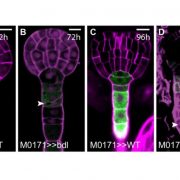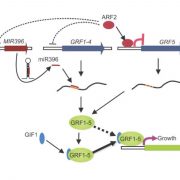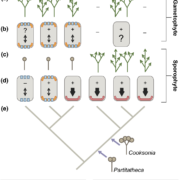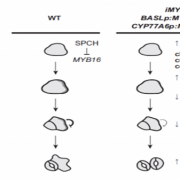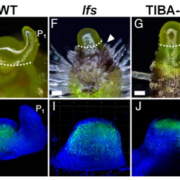A novel CLAVATA1 mutation causes multilocularity in Brassica rapa
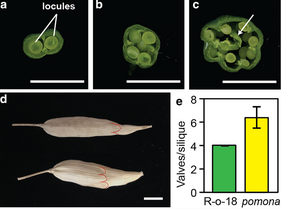 The CLAVATA1 receptor-like kinase and its ligand CLAVATA3 (CLV3) are associated with the CLAVATA-WUSCHEL pathway, which partly controls locule number (the seed-bearing structure of fruits). An increase in locule number is believed to increase the number of seeds and subsequently increase fruit size. Chow et al. investigated the effect of mutation of CLV1 on locule number in Brassica rapa. When a tetralocular B. rapa variety (R-o-18) was mutagenized, a mutant with additional locules was formed, which was named pomona. The pomona phenotype was discovered to be independent of CLV3 and due to a missense mutation in a CLV1. Therefore, pomona was renamed brclv1-1. This study finds that expression of brclv1-1 does not increase seed yield in B. rapa, which may be due to genetic load as a result of other EMS mutations, an additional internal gynoecium occupying the space meant for seed development, or misregulation of other genes. (Summary by Idowu Arinola Obisesan @IdowuAobisesan) Plant Direct 10.1002/pld3.476
The CLAVATA1 receptor-like kinase and its ligand CLAVATA3 (CLV3) are associated with the CLAVATA-WUSCHEL pathway, which partly controls locule number (the seed-bearing structure of fruits). An increase in locule number is believed to increase the number of seeds and subsequently increase fruit size. Chow et al. investigated the effect of mutation of CLV1 on locule number in Brassica rapa. When a tetralocular B. rapa variety (R-o-18) was mutagenized, a mutant with additional locules was formed, which was named pomona. The pomona phenotype was discovered to be independent of CLV3 and due to a missense mutation in a CLV1. Therefore, pomona was renamed brclv1-1. This study finds that expression of brclv1-1 does not increase seed yield in B. rapa, which may be due to genetic load as a result of other EMS mutations, an additional internal gynoecium occupying the space meant for seed development, or misregulation of other genes. (Summary by Idowu Arinola Obisesan @IdowuAobisesan) Plant Direct 10.1002/pld3.476


